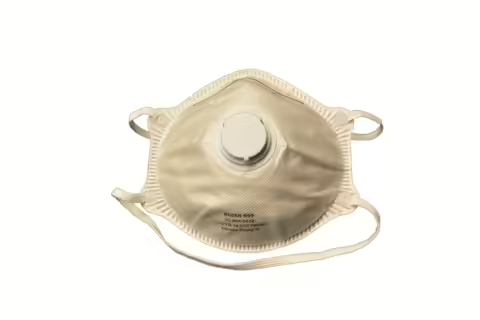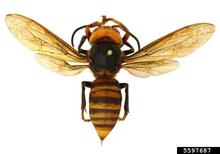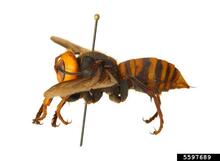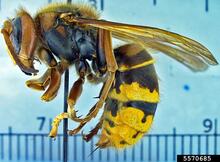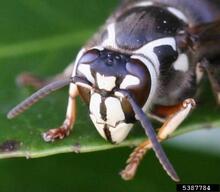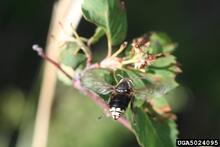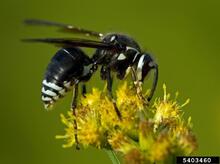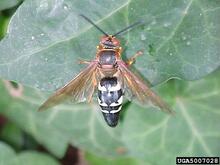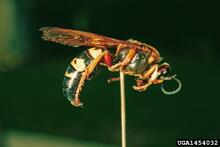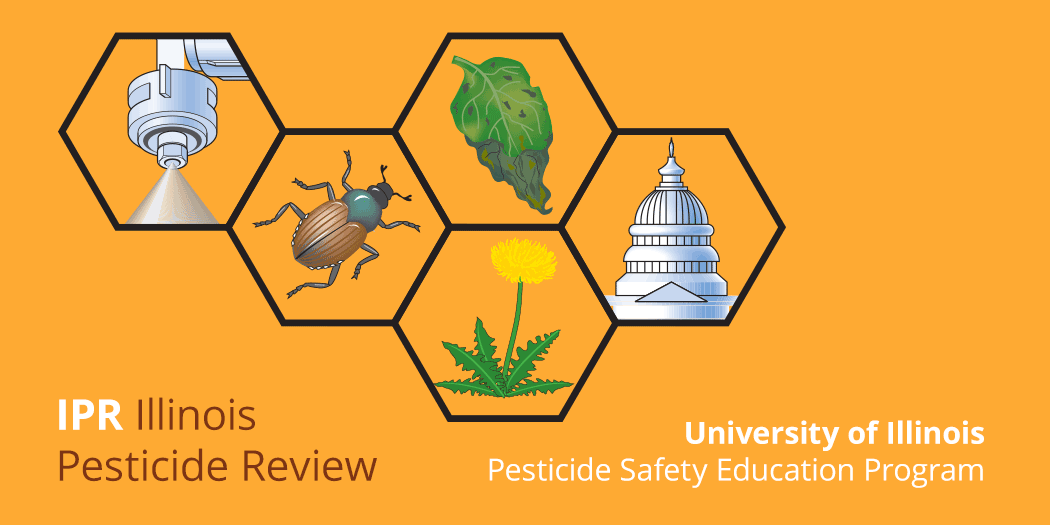
COVID-19 Affecting the Supply of PPE for Pesticide Applicators
By Maria Turner
Listen to the audio version of this article
Pesticide applicators are finding that acquiring Personal Protective Equipment (PPE) required for applications is now challenging as PPE is in short supply. Because many of the sales of respirators, face shields, and N95 face masks are being directed to health care workers and those working on the front line to protect from COVID-19, it is leading to a shortage for the agriculture industry. Increased PPE production might be too late for most agriculture operators and applicators to get them in time for spring and summer applications.
Homemade face coverings are easily accessible and an acceptable form of protection from COVID-19 but are not adequate for applying pesticides. A pesticide label includes a list of required PPE. The label is a legal document and must be followed. So what should an applicator do if they are unable to secure the necessary equipment?
Do your homework early:
- Read the labels of the pesticides you intend to use for the season. If there are items that you can’t secure, consider an alternate product that does not require that level of PPE.
- Pesticides may not be applied without the label-required PPE.
- Understand no exemption or relaxation of the requirements has been made by EPA for fit testing or PPE.
- Use a higher level of PPE. The disadvantage to this is that it may be more uncomfortable, more expensive and could be unavailable.
- Talk with the University of Illinois Pesticide Safety Education team about alternative practices or products that do not require as much PPE.
Places to Find Alternative Products and Practices:
- CDMS Label Database: http://www.cdms.net/Label-Database
Crop Data Management Systems (CDMS) works with key pesticide registrants, hosting their current labels and Safety Data Sheets online.
- PICOL: https://picol.cahnrs.wsu.edu/Home/Index
Pesticide Information Center Online (PICOL) for WA and OR: The search menu can find products by crop and pesticide type, and filter by target pest to seek out alternatives, and view current approved labels.
- Agrian: https://home.agrian.com
Works with manufacturers to have labels and other supporting documents. This search engine has a safety tab that lists the PPE requirements without having to search the label. The pesticide label can also be referenced.
- USDA Integrated Pest Management (IPM) Database: https://ipmdata.ipmcenters.org
Documents include common pests by crop, and a variety of pest management options.
- NPIC’s Product Research Online: http://npic.orst.edu/NPRO
Search for federally-registered pesticides by crop or by pest, and read labels online.
- OHSA’s Enforcement Guidance for Use of Respiratory Protection Equipment Certified under Standards of Other Countries or Jurisdiction during the Coronavirus 2019 Pandemic: https://www.osha.gov/memos/2020-04-03/enforcement-guidance-use-respiratory-protection-equipment-certified-under
- FDA -Use of Respirators, Facemasks, and Cloth Face Coverings in the Food and Agriculture Sector During Coronavirus Disease (COVID-19) Pandemic: https://www.fda.gov/food/food-safety-during-emergencies/use-respirators-facemasks-and-cloth-face-coverings-food-and-agriculture-sector-during-coronavirus
Resources:
https://aapse.wildapricot.org/COVID-19PPE/
https://ucanr.edu/blogs/blogcore/postdetail.cfm?postnum=41188
Illinois Fertilizer & Chemical Association 2020 Dicamba Recordkeeping Recommendations and Compliance Clarifications
By Illinois Fertilizer & Chemical Association
Listen to the audio version of this article
In 2019, the Illinois Department of Agriculture received a record number of pesticide misuse complaints, including more than 700 that were dicamba related. Many of those complaints resulted in the issuance of monetary penalties to the applicator, in the amount of $750 or $1,000. The misuse findings were split fairly evenly between commercial applicators and private applicators.
IFCA provides the following recommendations to help you avoid the most common mistakes that occurred in 2019, particularly with recordkeeping.
Note: All records related to dicamba application to soybean must be recorded within 72 hours of the application. Make sure that none of the 22 items required to be recorded are left blank. Recordkeeping forms are available at https://ifca.com/IllinoisDicambaTraining/Resources
- Wind speed and direction records: The dicamba labels require the applicator to record the wind speed and wind direction in the field of application, at boom height, at the start and finish of the application.
Recommendation on recording wind speed & direction: In the field of application, stand at the boom and acquire the GIS coordinates on your phone, other device, or app. Take a screen shot or photo of the GIS coordinates and the start time of the application. Using a hand-held anemometer, take a photo of the wind speed and direction on the anemometer at the start of the application. Follow the same procedure at the completion of the application. You should also monitor wind speed, direction and gusts during the application; taking a photo of the wind readings in the middle of the application can also greatly strengthen your record of application.
- Failure to adequately document buffers (downwind and omni-directional): Applicators must always maintain a 110 or 220 foot buffer when applying these products, from the downwind outer edges of the field. You must document how you implemented the 110 or 220 foot downwind buffer, depending on which product you use and the rate of application. In counties with endangered species, you must also document the 57-foot omni-directional buffer to the other three sides of the field. A map of the endangered species counties is available here.
Recommendation on documenting buffers: Draw a map or print a map of the field of application. The map or drawing should include all adjacent fields or areas on all sides of the field of application. If sensitive soybean or another sensitive crop isn’t adjacent but is nearby, you should document the location of those fields as well. On the map, indicate (draw) where you left the down-wind buffer and write down what you used as the buffer. For example: There is a mowed grass area and then a corn field downwind. Indicate (draw on the map) what portion of these non-sensitive areas (in this case the managed grass area and corn field) you utilized as the downwind buffer. Other items that could constitute the buffer include roads, mowed and managed ditches, Xtend soybeans, unplanted fields and footprints of buildings (see the labels). If you had to leave an in-field buffer in the Xtend soybean field you must indicate (draw or highlight) the portion of the Xtend field in which you applied the buffer.
For fields in endangered species omni-directional buffer counties, you must document the downwind buffer and you must also always document what exists on all other sides of the field. Trees, pastures, bodies of water, natural areas, un-mowed ditches and un-mowed grassy areas are all considered sensitive areas. If any of these areas exist within 57 feet of the edge of the field, you must draw and designate on the map what the areas are and how you implemented the 57-foot edge of field buffer on the three sides that are not the downwind sides of the field. Draw on the map what you used as the omni-directional buffer (i.e. in-field buffer, mowed areas next to the field, road next to the field, etc.).
- Consulting and documenting sensitive crop registries and DNR areas: The labels require you consult a sensitive crop registry. In Illinois that registry is FieldWatch (https://fieldwatch.com/). You must document the date you consulted the registry and what you determined from the website in reference to the field of application. ALSO, the Illinois Special Local Needs label requires you to determine if IL Dept of Natural Resources Nature Preserve Commission sites are nearby and protect them as you would a residential area if they are downwind. You can identify and download the coordinates of DNR Nature Preserve Commission sites at either of these sites:
https://idnr.maps.arcgis.com/apps/MapSeries/index.html?appid=8217cd3aa26a40f2b8b1c123b d4b0cea.
https://ifca.com/DNR_NPS
The important thing is to document the date in which you checked these registries and what you learned as a result, in terms of the location of sensitive crops and DNR sites to the intended field of application. The date and your findings must be in the record of application.
- Records should be condensed and in one recordkeeping form if possible. If IDA requests to review your records of application, when you submit your records to IDA they must be complete. If additional documents are attached (such as maps or load-out tickets) it is helpful to not have to look at multiple documents in order to piece together the 22 required elements.
We recommend you have the 22 items documented in a single document (record) of application. Supporting documents such as maps or narrative descriptions of buffers can accompany the main recordkeeping form.
- Documenting the 85 degree temperature restriction: In 2020, the Illinois Special Local Needs label requires you to check the forecasted high temperature for the field of application at https://www.weather.gov/. You can check the forecast up to 24 hours ahead of an intended application. If the forecast high for the zip code in the town where the field is located is 86 degrees or higher, it is a DO NOT SPRAY day. If the forecasted high is less than 86 degrees, you can spray but must also take the in-field temperature at the time of application and if it happens to be 86 degrees at the time of application, you cannot spray. In all cases, print the screen of the weather forecast site for any day you apply dicamba and keep it in your record of application. Also take a photo of the temperature reading (from your phone or sprayer monitor) at the beginning and end of the application and keep it with your records.
- Adhere to the cut-off dates: There are three cut-off dates for dicamba application, and WHICHEVER COMES FIRST, you must comply with these cut-off requirements:
- No more than 45 days after planting (5/20/20, Dr. Aaron Hager adds that if replanting is necessary, the original planting date must be used for determining the application cut-off date. Clearly delineate and document the replant areas separately.)
- Not beyond the R1 stage of growth (the Tavium label states not beyond V4)
- Not after June 20, 2020
- Other considerations: One of the most common questions IFCA receives is “how many violations can an applicator receive before their license is suspended or revoked?”
There is no specific number of violations that trigger a suspension or revocation. The Illinois Pesticide Act authorizes the Director of IDA to modify, suspend or revoke any license after an opportunity for an administrative hearing. The Director is also authorized to suspend any license before a hearing when it is in the interest of the people of the State of Illinois.
Be advised that spraying after the cut-off date could be considered cause for license suspension.
Another common question is whether IDA is required to find fault if dicamba symptomology is present. Again, each case is different. The Pesticide Act establishes point values for Use and Violation criteria. The Act also establishes what administrative actions or monetary penalties must be imposed based on those point values. Bear in mind that the majority of pesticide labels declare that it is the applicator’s responsibility to comply with the label requirements and avoid drift.
If you any questions regarding compliance with the dicamba labels and recordkeeping, please contact IFCA. Feel free to share this guidance document with your farmer customers.
Dicamba labels including the Special Local Needs labels, recordkeeping forms and other helpful resources can be downloaded at https://ifca.com/IllinoisDicambaTraining/Resources.
IDA provides dicamba guidance at https://www2.illinois.gov/sites/agr/Pesticides/Pages/Dicamba.aspx.
Asian Giant Hornets: Your Questions Answered
By Sarah Hughson
Listen to the audio version of this article
On May 3, 2020, articles and videos discussing the first instance of Asian giant hornets (Vespa mandarinia) identified in the US began to run in the national news. These headlines have raised concern about this animal and may leave some wondering if they have seen it or if we need to worry about it in Illinois. Here are the answers to some frequently asked questions about Asian giant hornets:
Where has Asian giant hornet been found in North America?
In September 2019, a nest of Asian giant hornets was found and destroyed on Vancouver Island in British Colombia, Canada. In Washington State, there were 3 photo sightings, each of a single hornet, in August, October and December of 2019. The December photo was of a dead hornet that was later submitted to experts and confirmed as an Asian giant hornet. This hornet was the only confirmed Asian giant hornet in the US.
What is being done to detect and remove them?Washington State Department of Agriculture has already begun monitoring the areas where the hornets were sighted and the surrounding counties to determine if any hornets are present. Monitoring efforts include traps baited with food or pheromone attractants to capture foraging adults and infrared monitoring to identify potential nest sites. If Asian giant hornets are identified, they will be eradicated. There have been no sightings or trap captures so far in 2020.
Asian giant hornet (Vespa mandarinia), Washington State Department of Agriculture , Washington State Department of Agriculture, Bugwood.org
Where is the hornet from and how did it get to the US?
Asian giant hornets are native to forested areas in east Asia and southeast Asia. They occur in multiple countries but are most common in Japan. It is unclear how the hornets arrived in North America.
Are they in Illinois?
No. There have been no reports of Asian giant hornet in Illinois or anywhere in the US outside of Washington State. The hornets are not capable of reaching Illinois without being transported by humans. If a sighting is ever confirmed in Illinois, United States Department of Agriculture, Illinois Department of Agriculture and University of Illinois at Urbana-Champaign will release a Pest Alert to notify the public and the media.
How can they impact human health?
Like our native hornet species, Asian giant hornets sting only if they are threatened or defending their nest. These hornets may also defend the nests of other insects they intend to use as food for their young, creating an additional situation where they could feel threatened and sting. Asian giant hornets feed on honey bees (Apis mellifera), so beekeepers are more likely to encounter these hornets. Beekeeping protective clothing is not thick enough to prevent stings from this hornet so beekeepers should not approach the hornets.
The media has reported that people can be killed by Asian giant hornet stings. This is not the normal outcome of a single sting. Most people who have died after being stung by this insect were stung many times or had allergic reactions. This hornet’s venom is similar to that of other hornets but, because it is so large, it injects more venom and can have a greater impact on human health. Protecting people is one of the primary goals in monitoring and controlling these insects.
How can they impact honey bees and wildlife?
While adult Asian giant hornet workers feed on sweet foods like fruit and sap, they collect protein-rich foods to feed their larvae. These foods are usually other insects, including honey bees. Unlike Asian honey bees (Apis cerana) in the hornet’s native range, European honey bees in the US, are unable to defend themselves against this predator. A group of worker hornets can enter a honey bee hive and kill nearly all of the bees inside, but this occurs only in the late summer, when the hornets are collecting food for their young. In Japan, screens or small bars are placed over hive entrances to allow the bees to come and go but prevent hornets from entering. Currently, we do not know how these hornets could impact native bees or other wildlife. Protecting wildlife and honey bees are among the main reasons to closely monitor and control the hornets.
What should I do if I see one?
If you think you have seen this animal, do not approach it or attempt to remove a nest without professional help. Instead, contact University of Illinois Extension and let them know what you have seen. There is a good chance that the insect you are seeing is European hornet, baldfaced hornet or eastern cicada killer, which are all large wasps that occur in Illinois. Extension educators can provide identification and notify Illinois Department of Agriculture and United States Department of Agriculture if necessary.
European hornet
European hornet (Vespa crabro), Allan Smith-Pardo, Invasive Hornets, USDA APHIS PPQ, Bugwood.org
European hornet (Vespa crabro) was introduced to the US in the 1800s as a biocontrol agent and has become established in the Northeast, South and parts of the Midwest, including Illinois.
European hornet is about 1 inch long with a yellow and black abdomen. The black bands on the abdomen extend into a V-shape over the center of the first few segments. Each abdominal segment has a black spot on the left and right side. For comparison, the Asian giant hornet is 1.5 – 1.75 inches long and noticeably bulkier than our local hornets. Asian giant hornet has an orange head and an abdomen with orange and black stripes, so if the wasp you see has strong yellow coloration on the abdomen, it is more likely a European hornet.
The nesting sites of these species also differ. European hornets usually nest in tree holes but Asian giant hornet is a ground nesting species that may choose a nesting site in an abandoned animal hole in a forested area.
European hornet is unlikely to sting but may approach or bump into a person to intimidate them so they leave the area. They usually only sting if handled or stepped on.
Baldfaced hornet
Left: Baldfaced hornet (Dolichovespula maculata), Johnny N. Dell, Bugwood.org
Center: Baldfaced hornet (Dolichovespula maculata), Whitney Cranshaw, Colorado State University, Bugwood.org
Right: Baldfaced hornet (Dolichovespula maculata), David Cappaert, Bugwood.org
Baldfaced hornets (Dolichovespula maculata) are found throughout most of North America. They are 0.5 - 0.8 inches in length and appear bulkier than other native wasps of a similar size. Adults have a black body with distinct white markings on their head and white banding on the last few segments of their abdomen. Asian giant hornets are at least twice the length of the average baldfaced hornet worker and at least twice as wide. Asian giant hornet has a bright orange head and an abdomen with orange and black stripes. While baldfaced hornets appear bulky and proportionately similar to Asian giant hornets, the white markings on the head and abdomen will let you know that you have encountered baldfaced hornet and not Asian giant hornet.
Baldfaced hornets build papery football-shaped nests on tree branches or shrubs. The nests are positioned at least 3 feet above the ground and some can be located very high in trees. In contrast, Asian giant hornets nest in the ground in forested areas.
Like many bees, wasps and hornets, baldfaced hornets will sting if they feel threatened or if their nest is disturbed. However, they are a species of yellowjacket and like other yellowjackets, they may feel threatened and sting if you are too close to a nest or if they are swatted or otherwise threatened while foraging. It is a good idea to avoid baldfaced hornet and yellowjacket nesting sites and give foragers a respectful distance.
Eastern cicada killer
Left: Cicada killer (Sphecius speciosus), David Cappaert, Bugwood.org
Center: Cicada killer (Sphecius speciosus), Nancy Hinkle, University of Georgia, Bugwood.org
Right: Cicada killer (Sphecius speciosus), Jim Occi, BugPics, Bugwood.org
Eastern cicada killers (Sphecius speciosus) are large wasps native to most of the eastern US. The cicada killer is 1.5 inches long, with a red to brown head and a black abdomen with uneven yellow banding. The Asian giant hornet is similar in length measuring 1.5 – 1.75 inches long but much bulkier. Asian giant hornet has an orange head and an abdomen with orange and black stripes.
Their nesting sites also differ from those of the Asian giant hornet. Cicada killers are not social insects, each female digs a hole in an open area with bare soil where she rears her young. Female cicada killers collect cicadas and bring them back to their hole to feed the young. Asian giant hornets are eusocial, with many individuals living in a nest and working together to rear their young. Asian hornets prefer to nest in the ground in forested areas away from open areas and humans.
Male cicada killers defend a territory where they may approach people who pass within the boundary. While this is an intimidating behavior, male cicada killers do not have a sting and cannot harm you. Female cicada killers do have a sting but usually do not approach people and only sting if handled or stepped on.
Additional Resources:
Asian giant hornet and human health. Washington State Department of Agriculture. https://agr.wa.gov/departments/insects-pests-and-weeds/insects/hornets/agh-human-health
Asian giant hornet fact sheet. 2020. Susan Cobey, Tim Lawrence and Mike Jensen. Washington State University Extension. https://s3.wp.wsu.edu/uploads/sites/2091/2020/04/AGHPreReview4Factsheet.pdf
Asian giant hornet: What gardeners need to know. Washington State Department of Agriculture. https://cms.agr.wa.gov/WSDAKentico/Documents/Pubs/831-AsianGiantHornet-FactSheet-Gardeners.pdf
Asian giant hornet: What outdoor workers need to know. Washington State Department of Agriculture. https://cms.agr.wa.gov/WSDAKentico/Documents/Pubs/834-AsianGiantHornet-FactSheet-OutdoorWorkers.pdf
New pest response guidelines. 2020. Amber Tripodi and Trace Hardin. United States Department of Agriculture. https://cms.agr.wa.gov/WSDAKentico/Documents/PP/PestProgram/Vespa_mandarinia_NPRG_10Feb2020-(002).pdf
Sizing up the Asian giant hornet. Washington State Department of Agriculture. https://agr.wa.gov/departments/insects-pests-and-weeds/insects/hornets/size-comparisons
Resources for Safe Disinfectant Use
Listen to the audio version of this article
As the COVID-19 pandemic continues, cleaning and disinfecting surfaces remains an important part of preventing the spread. Unfortunately, it can be difficult to determine the difference between facts and myths regarding COVID-19. When used properly, disinfectants can be effective against the spread of diseases such as COVID-19. However, when used incorrectly, they can cause harm. Exposure too soon after use can irritate the skin. A freshly wiped down shopping cart can be hazardous to a child who is placed inside before the product has dried. Additionally, due to supply shortages of certain cleaning products and sadly an abundance of misinformation on social media, many have taken a do-it-yourself approach when it comes to disinfecting, whether it be mixing different cleaners or using them in an unlabeled manner. As a result of these misuses of cleaning products, several poisonings have occurred unfortunately.
The American Association of Pest Control Centers has issued an Alert titled, “Using Disinfectants: COVID-19”. The goal is to get the word out about preventing poison exposures to commonly used medicines, hand sanitizers, and cleaning products. A primary point addressed in the alert is that disinfectants are not intended to be used on the skin or in the body. Tips on preventing harmful exposures as well as links for more information and emergency numbers are provided as well. This resource can be found at: https://piper.filecamp.com/uniq/tWyujn4aphIEG7lh.pdf.
On April 30th, the National Pesticide Information Center (NPIC) and the American Association of Poison Control Centers worked in conjunction to host a Disinfectant Q&A on Facebook. Commonly asked safety questions about disinfectants were addressed and can be found at https://www.facebook.com/aapcc. Scroll down their page to find the posts. Questions such as these are answered:
- How often should I be disinfecting “high-touch” surfaces?
- Why shouldn’t I use a disinfectant on food packaging or produce?
- Will my protective equipment still be effective if I try to disinfect masks or gloves for COVID-19?
- I can’t find disinfectants (or hand sanitizers) at the store. I saw a great recipe online, what are the risks if I try DIY?
- Why can’t I spray disinfectants into the air to kill COVID-19?
- What are the differences between sanitizers, disinfectants and antiseptics?
Additionally, EPA has created a poster on “6 steps for Safe and Effective Disinfectant Use” available at: https://www.epa.gov/sites/production/files/2020-04/documents/disinfectants-onepager.pdf.
NPIC has created a new infographic to help people navigate disinfectant label directions at: http://npic.orst.edu/outreach/covid-infographic.pdf
For assistance with finding disinfectant products that are effective against COVID-19, check EPA’s List N which is featured on a newly revamped website. At https://www.epa.gov/pesticide-registration/list-n-disinfectants-use-against-sars-cov-2. Additionally, there is a new app to launch which allows for easier sorting and searching of disinfectant products. It can be found at: https://cfpub.epa.gov/giwiz/disinfectants/index.cfm. For further assistance, check out “Help with Selecting Disinfectants for COVID-19” in the last issue of this newsletter, at https://extension.illinois.edu/newsletters/illinois-pesticide-review-newsletter/marchapril-2020#anchor-1. These steps can protect consumers from purchasing illegal and unregistered disinfectant products. EPA and Customs Border Protection have been working diligently to stop those sales and seize illegal products.
Sources:
EPA email 4/24/20 and 5/12/20.
NPIC email 4/30/20.
American Association of Poison Control Centers news release 4/23/20.
Download This Issue of the Newsletter
Download, save, and share the 2020 May/June issue of the newsletter.
Editorial Notes
The development and publication of this newsletter has been supported with funding from the Illinois Department of Agriculture.
Michelle Wiesbrook, Extension Specialist, Pesticide Safety Education
The Illinois Pesticide Review is published six times a year. For more information about pesticide safety or for more issues of this newsletter, please visit us at www.pesticidesafety.illinois.edu. You can also reach us at 800-644-2123.
Disclaimer: Mention of trade names in this newsletter is for general information purposes only and does not constitute endorsement of one product over another, nor is discrimination intended against any product.
Copyright © 2020, Board of Trustees, University of Illinois
We’re on Facebook! Follow us for updates on programs, news, and events.
